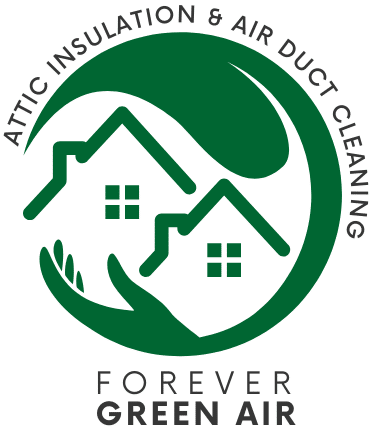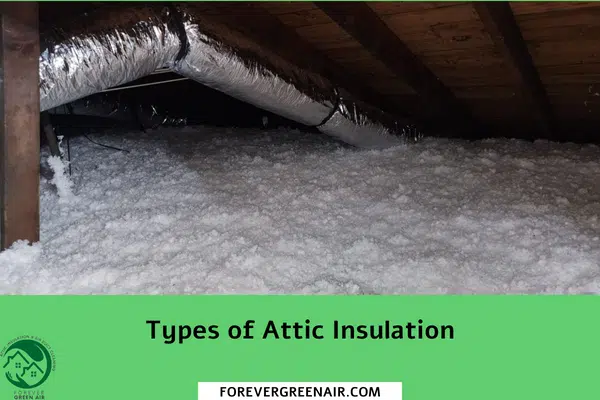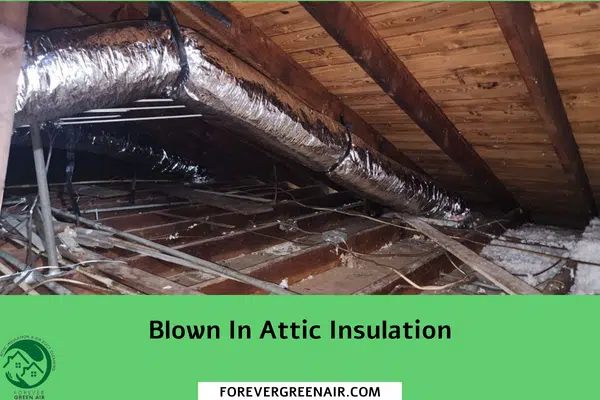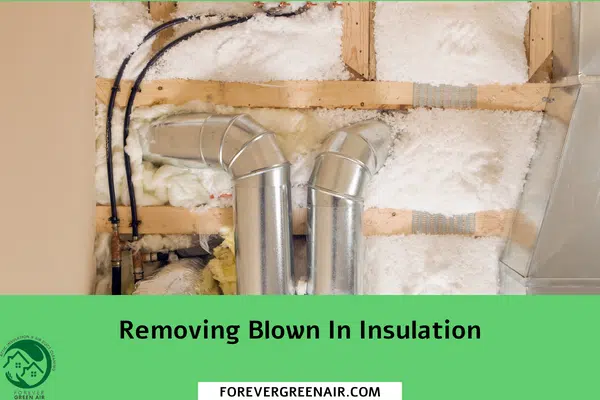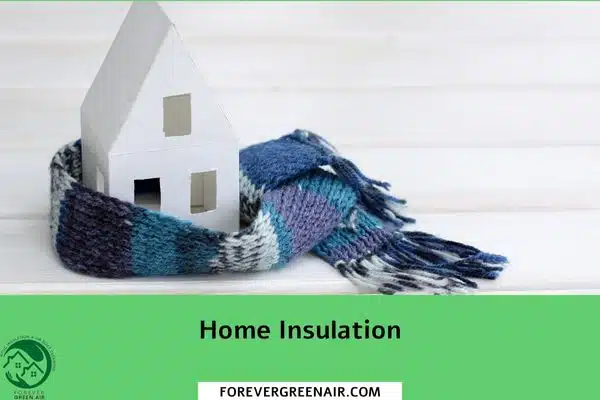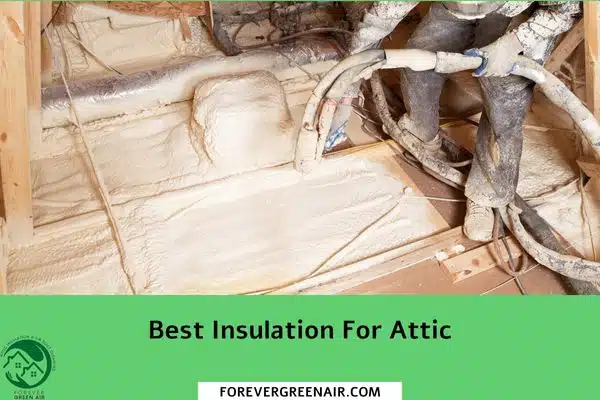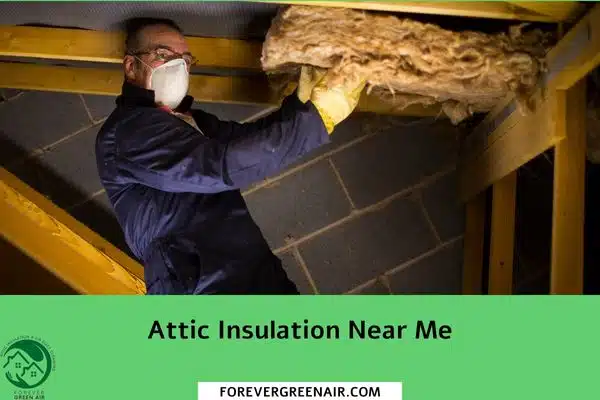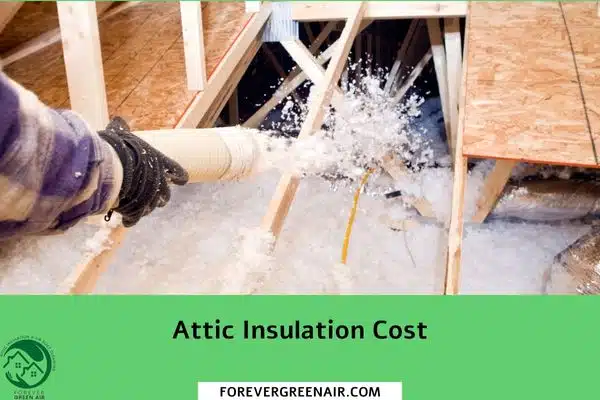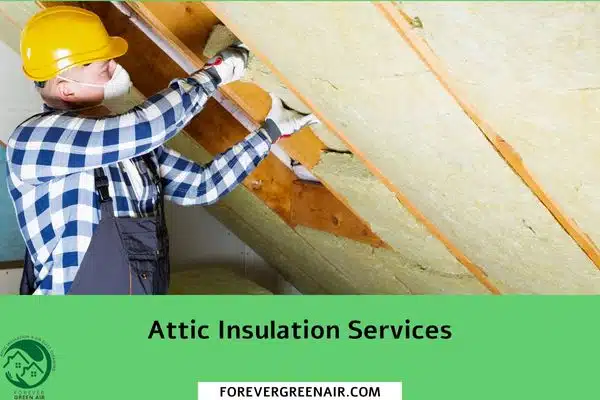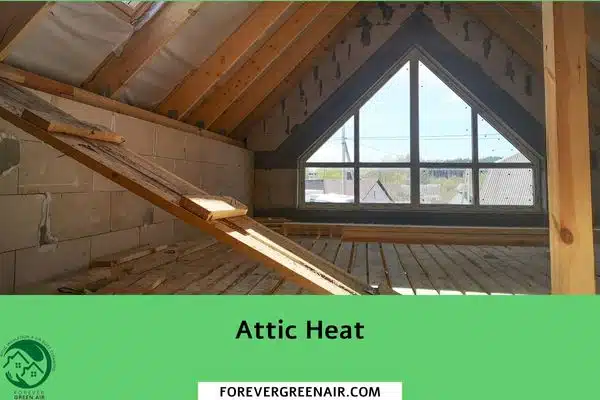Finding the right type of insulation for your home’s attic can be intimidating- after all, there are so many types to choose from. But understanding how different materials work and which one is best suited to your desired result can make a big difference when it comes to keeping your home energy efficient while also helping reduce monthly bills.
In this blog post, we’ll dive deep into the various types of attic insulation available on the market today so that you can make an informed decision about which one is best for you!
Understand the Different Types of Attic Insulation
Understanding the different types of attic insulation can make all the difference when it comes to keeping your home energy-efficient. There are a variety of options available, each with their own unique benefits.
For example, fiberglass insulation is one of the most common types and is easily installed. Another popular option is cellulose insulation, which is made from recycled materials and has a high fire-retardant rating. Reflective insulation is great for hot climates, as it reflects heat away from the home.
Lastly, spray foam insulation provides a seamless and airtight seal, preventing drafts and air leaks. By learning about the various types of attic insulation, homeowners can make an informed decision and make their home more comfortable and energy-efficient.
Contact Us
a. Glass Wool
When it comes to attic insulation, there are various types to choose from, and one popular choice is glass wool. Made from recycled glass, glass wool is incredibly efficient at insulating homes and buildings by trapping pockets of air for added insulation.
This type of insulation can help keep homes warmer in the winter and cooler in the summer, leading to lowered energy bills and a more comfortable living environment. With glass wool insulation, homeowners can enjoy peace of mind knowing that their home is properly insulated, and they are doing their part for the planet by using a sustainable material.
b. Cellulose
When it comes to choosing the right type of attic insulation for your home, there are a lot of options to consider. One popular choice is cellulose insulation. Made from recycled newsprint and treated with fire-retardant chemicals, cellulose insulation is a cost-effective and eco-friendly option for homeowners.
It also has a high R-value, which means it can effectively resist heat flow and keep your home more comfortable year-round. Whether you’re looking to upgrade your attic insulation for energy savings or simply want a more sustainable option, cellulose insulation is definitely worth considering.
c. Fiberglass
When it comes to types of attic insulation, many homeowners are choosing to go with fiberglass insulation. This popular option is made up of tiny glass fibers and is spun together to create a fluffy, lightweight material.
It’s an affordable choice that can help keep your home warm in the winter and cool in the summer. Plus, fiberglass insulation is easy to install and can provide superior soundproofing capabilities. So if you’re considering upgrading your attic insulation, fiberglass may just be the perfect option for you.
d. Spray Foam
When it comes to insulating your attic, there are several types of attic insulation to consider. One option that has gained popularity in recent years is spray foam insulation.
This type of insulation is applied using a spray gun and expands into a foam that fills every nook and cranny in your attic. Unlike traditional insulation materials, spray foam also acts as an air barrier, preventing drafts and air leaks. Not only does spray foam insulation provide superior insulation performance, but it can also help improve indoor air quality and reduce energy costs.
However, it’s important to note that spray foam insulation requires professional installation, so it’s not a DIY project. Overall, spray foam insulation is a great option to consider for those looking to upgrade their attic insulation.
More Articles
Benefits of Installing Attic Insulation
Looking to make your home more energy efficient? Consider the benefits of installing attic insulation. Not only will it help regulate the temperature in your home, but it can also reduce your energy bills and improve the overall comfort of your living space.
With various types of attic insulation available, such as batt and blown-in insulation, you can choose the option that works best for your needs and budget. Plus, installing attic insulation can increase the value of your home and make it more attractive to potential buyers. Don’t let your attic go overlooked any longer – invest in insulation and start reaping the rewards.
a. Increased Comfort and Temperature Regulation
When it comes to your home’s comfort, proper insulation is key. The right insulation can help regulate temperature, keeping your home cool in the summer and warm in the winter. There are many types of attic insulation to choose from, each with its own benefits.
Fiberglass insulation is affordable and easy to install, while cellulose insulation is eco-friendly and has a high resistance to fire. Spray foam insulation is great for sealing gaps and preventing drafts, and radiant barrier insulation reflects heat to keep your attic cooler. With so many options, it’s easy to find the perfect type of insulation to ensure optimal comfort in your home.
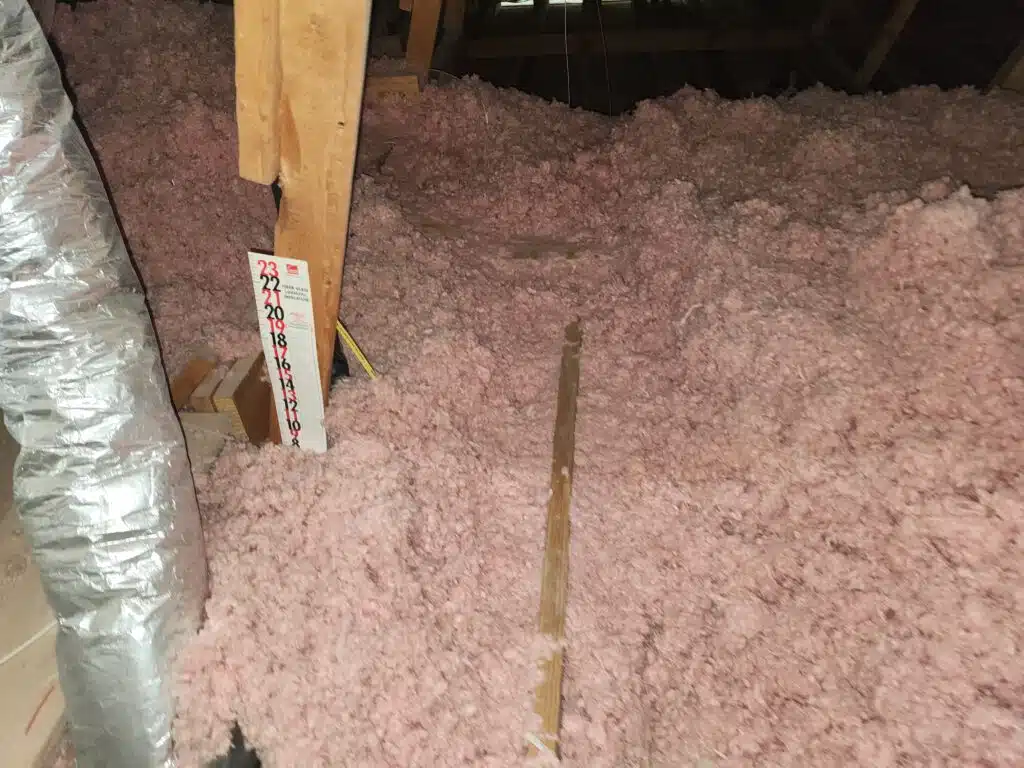
b. Lower Energy Bills and Increased Energy Efficiency
As energy costs continue to rise, many homeowners are looking for ways to lower their energy bills and increase the energy efficiency of their homes. One solution that is often overlooked is the type of insulation used in the attic.
There are several types of attic insulation on the market, each with their own benefits and drawbacks. From traditional fiberglass batts to blown-in cellulose and spray foam insulation, finding the best fit for your home can be a challenging task.
However, investing in quality attic insulation can lead to improved energy efficiency and lower energy bills in the long run.
c. Noise Reduction
If you’re looking to reduce unwanted noise in your home, one effective solution lies in your attic. By choosing the right insulation, you can minimize sound transmission from the outside and within your house.
There are various types of attic insulation available that can serve this purpose. For example, blown-in fiberglass insulation is highly effective at reducing noise, as it fills every nook and cranny to create a barrier against sound waves. Meanwhile, cellulose insulation made from recycled paper is another popular choice, as it is denser and also acts as a noise-dampening layer.
Whatever option you choose, investing in noise-reducing attic insulation can make a noticeable difference in the peace and quiet of your home.
How to Choose the Right Type of Attic Insulation for Your Home
When it comes to choosing the right type of attic insulation for your home, there are a few things to consider. Firstly, you’ll want to think about the different types of attic insulation that are available. These can range from batts and rolls to blown-in insulation and spray foam.
Each type has its own pros and cons, so it’s important to do your research before deciding which one is right for you. You’ll also want to think about factors like your budget, the size of your attic, and any pre-existing insulation that may be in place.
With a little bit of effort and some professional advice, choosing the right type of attic insulation can help you save money and stay comfortable in your home.
a. Consider Your Climate, Budget, and R-Value Requirements
When it comes to insulating your attic, there are a few important factors to keep in mind. Climate is one key consideration, as the type of insulation you choose should be able to handle your region’s unique temperature and moisture patterns.
Budget is another important factor, as some types of attic insulation can be more expensive than others. Finally, R-value requirements should also be taken into account, as this measurement indicates the level of thermal resistance your insulation can provide.
With these factors in mind, it’s important to explore the various types of attic insulation available in order to select the best option for your home. From fiberglass batts to spray foam, each type of insulation boasts its own set of benefits and drawbacks.
By considering your climate, budget, and R-value requirements, you can make a well-informed decision that will ultimately improve the overall comfort and energy efficiency of your living space.
b. Evaluate Pros and Cons of Each Type of Insulation Material
When it comes to insulating your attic, there are a variety of materials to choose from. Each type of insulation has its own set of pros and cons to consider. For example, fiberglass insulation is a popular and affordable option that can effectively reduce heat loss.
However, it can be difficult to install and may not be as effective in extremely cold climates. On the other hand, spray foam insulation provides excellent insulation and air sealing properties but comes at a higher cost.
Additionally, it can be messy to install and may pose health risks during application. Ultimately, the best type of attic insulation for your home will depend on factors such as your budget, climate, and personal preferences.
c. Contact a Professional for Assistance if Needed
When it comes to insulation, there are many different types of attic insulation that can be used. Each type has its pros and cons, and can have a significant impact on the comfort and energy efficiency of your home.
However, if you’re not sure which type of insulation is best for your attic, or if you’re not comfortable handling the installation yourself, it’s always a good idea to contact a professional for assistance.
A professional can help you choose the right type of insulation for your attic based on factors such as your budget, the size of the space, and the local climate.
They can also ensure that the insulation is installed correctly, which is key to ensuring its effectiveness. So, don’t hesitate to reach out to a professional if you need help with your attic insulation – it could save you a lot of time, money, and headaches in the long run.
Steps to Installing Attic Insulation Properly
Installing attic insulation is a crucial step in ensuring your home is energy-efficient. Understanding the different types of insulation available is just as important as the installation process itself.
Fiberglass batts and blown-in insulation are the most common types used for attic insulation, with each having their own benefits and drawbacks. Proper installation involves ensuring that there are no gaps or spaces left without insulation, as this can lead to heat loss and energy inefficiency.
By taking the necessary steps to install attic insulation properly, you can not only save on energy costs, but also increase the comfort level of your home.
a. Remove Old Insulation (if Applicable) and Make Repairs as Necessary
Attic insulation plays a crucial role in maintaining the temperature of your home. Whether you’re dealing with hot summers or chilly winters, a well-insulated attic can help regulate your indoor climate and save energy.
However, over time, insulation can wear out and lose its effectiveness. That’s why it’s important to remove old insulation if applicable and make repairs as necessary.
You may come across different types of attic insulation, such as fiberglass or cellulose, depending on the age of your home and previous renovations. By investing in the upkeep of your insulation, you can ensure that your home stays comfortable year-round.
b. Check for Air Leaks in Your Attic
Does your home feel drafty or chilly during the winter months? Your attic might be the culprit. One common issue homeowners face is air leaks in their attic, which can allow warm air to escape and cold air to seep in.
So, how can you prevent this? The first step is identifying the type of insulation in your attic. There are several types of attic insulation, including fiberglass, cellulose, and spray foam. Each has its own pros and cons, but all can be effective in keeping your home cozy and energy-efficient.
By checking for air leaks and ensuring proper insulation, you can keep your attic – and your home – in tip-top shape.
c. Install New Insulation Material According to Manufacturer Instructions
If you’re planning on installing new insulation material in your attic, it’s important to know which type will work best for your home. There are a few different types of attic insulation to choose from, including fiberglass, sprayed foam, and blown-in insulation.
Each has its benefits and drawbacks, so be sure to do your research before making a decision. Once you’ve decided on the type of insulation that’s right for your needs, make sure you follow the manufacturer’s instructions carefully during installation.
This will ensure that the insulation is installed correctly and effectively, helping to improve the energy efficiency of your home and save you money on your heating and cooling bills.
In Conclusion
Ensuring that your attic is well insulated is crucial for maintaining the energy efficiency of your home. However, simply having insulation installed is not enough. Regular maintenance is necessary to preserve its effectiveness. One important aspect of this upkeep is sealing any air leaks that may occur.
This can be done using either caulk or foam sealant. Another factor to consider is the type of insulation you have. Whether you have fiberglass or cellulose insulation, it is essential to keep it clean and free of debris.
Additionally, it is important to inspect your roof for any signs of damage or infestation, such as from rodents. In the event that you do notice any problems with your attic, it’s best to call in a professional to address the issue promptly. By following these maintenance tips, you can ensure that your attic insulation remains efficient and effective for years to come.
Taking the time to properly insulate your attic can have long-term payoffs. Insulating an attic helps to maximize energy efficiency, reduce heating and cooling bills, improve comfort levels in the home, and block outside noise from entering the living space.
Selecting and installing attic insulation is not always a straightforward task, so if you are ever unsure of how best to proceed, contact an experienced professional who can help you through the process. Remember that regular inspection and maintenance of your attic insulation will ensure that it remains working optimally for years to come.
So don’t forget to check for debris and signs of rodent infestation on a regular basis. Understand the benefits of proper attic insulation today and make sure your home is as efficient as possible!
